Find the Best Camping Power Bank in 2025 for Your Adventures
There’s nothing more Aussie than packing the swag, heading for the bush, and switching off—until your phone dies just when you’re trying to snap that sun‑baked sunset over the Murray. A reliable camping power bank keeps your camera rolling and your GPS on track without tethering you to a powered site.
In this guide, we’ll lay out some of the best power banks for camping in 2025—from light pocket rockets for a quick overnighter to rugged, solar‑topped bricks. We’ll also break down the key features that matter, so you end up with the right size, speed, and build for your style of adventure.
Best Camping Power Banks in 2025
Here’s our pick of five top-rated power banks for camping in 2025. These are the lightweight battery packs you can toss in a jacket pocket or daypack—perfect for keeping your phone, earbuds, tablet, or a USB-C laptop topped up during a weekend getaway. Let’s take a closer look at what each one offers:
1. EcoFlow RAPID Magnetic Power Bank 10,000mAh
If you’re packing light but still want top-tier performance, the EcoFlow RAPID Magnetic Power Bank hits a great balance between size, speed, and smart features. You pull up at a riverside campground just before dusk, snap your iPhone to this palm-sized pack, and—click—the magnet locks on like a limpet. While you pitch the tent, this Qi2-certified portable charger pushes 15 W of wireless power into your phone, and the smart-display quietly counts down the minutes until you’re full.
Need to top your MacBook Air before night-sky edits? Flip out the attached USB-C cable and pour in up to 65 W—enough for roughly eight extra work hours. A built-in kickstand props your screen for movie night, the app lets you ping the pack if it vanishes beneath sleeping-bag chaos, and an automotive-grade thermal system checks temps fifty times a second to keep everything cool.
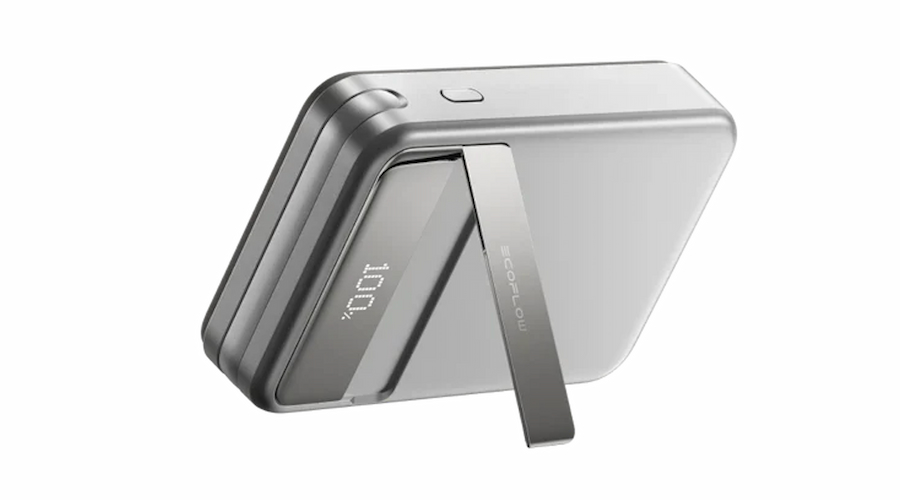

Key features
65 W USB-C built-in cable + port – fast-charge an iPhone 15 Pro to 50 % in ~25 min, or give a USB-C laptop a real boost
Qi2-certified 15 W magnetic wireless pad – hits ~50 % on an iPhone 15 Pro in about 40 min; N52 magnets stop slip-offs while scrolling
Rapid self-recharge – 65 W input juices the bank from 0 % → 70 % in ≈33 min
Smart digital display – shows remaining capacity, live output, and estimated refill time at a glance
EcoFlow app integration – customise the boot screen, locate the pack via buzzer, or enable Healthy Charging Mode to prolong cell life
Advanced thermal management – sensors run 4.32 million checks per day to prevent overheating during magnetic charging
Kickstand & anti-slip finish – doubles as a mini screen stand and keeps the bank-phone sandwich steady on uneven picnic tables
Compact build – 108 × 70 × 22.9 mm, 258 g: easy to slide into a jacket or camera pouch without stealing space from trail snacks
2. Anker 737 Power Bank 24,000 mAh
You can lean on the Anker 737 power bank for longer stays or tech-heavy kits. Plug the included USB-C cable into your 16-inch MacBook Pro and watch the read-out tick up: Power Delivery 3.1 pushes a full 140 W, so you’ll claw back roughly half a charge in the time it takes to boil water for freeze-dried dinner.
Flip the flow when you’re back at home and the same port sucks in 140 W, refuelling the bank itself before you’ve finished emptying your rucksack. The chunky 24,000 mAh cell is more than one-and-done; it’ll rescue a phone four or five times or give a MacBook Air a complete second wind, all while that crisp digital screen keeps tabs on watts and minutes remaining. Three ports mean you can also keep headphones and a GoPro ticking over at the same time.
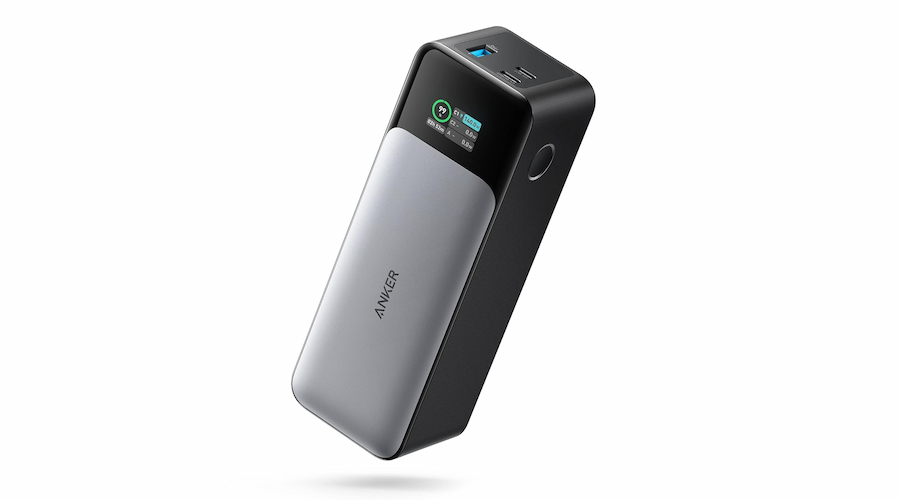

Key features
140 W two-way USB-C PD 3.1 – tops a 16” MacBook Pro to 50 % in ~40 min; recharges the bank at the same speed
24,000 mAh, long-life cells – iPhone 15 ≈ 5 full cycles; MacBook Air ≈ 1.2 cycles
Three charging ports – 2× USB-C, 1× USB-A share power intelligently so nothing idles
Smart digital display – live input/output wattage plus time-to-full for both the bank and connected devices
Durable anodised shell – shrugs off pack scuffs and loose-gear rattles
3. UGREEN 145 W Power Bank 25,000 mAh
Early‑morning drone flights burn through both batteries and daylight. Clip UGREEN Power Bank’s 240 W cable into the 145 W USB‑C port and your 16‑inch MacBook Pro bounces from flat to 56 % in half an hour. The real draw, though, is stamina: 25,000 mAh on tap means you can shoot, edit, and still have juice left for your phone and controller.
Two‑way PD charging pulls 65 W when you plug the bank into the wall, so a full refill takes about the time you spend sorting footage. A clean LED percentage read‑out spares you the guesswork of blinking‑light gauges, and twin additional ports let you top up smaller kit without throttling the main feed.
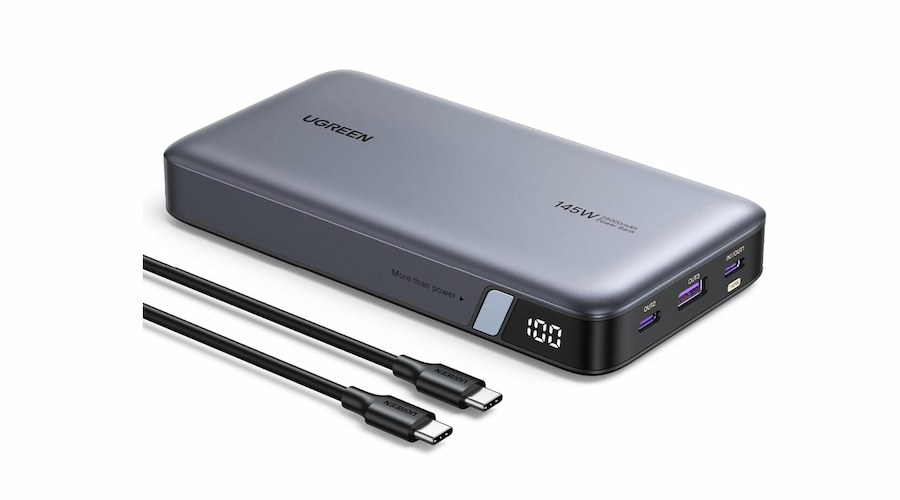

Key features:
145 W max via single USB-C – PD 3.1/3.0 and QC 3.0 support for laptops up to 140 W draw
25,000 mAh pack – MacBook Air ≈ 1.3 charges; phones up to ≈ 5.6 cycles
65 W two-hour self-recharge – quick turnaround between trips
LED digital display – exact percentage remaining at a glance
4. NESTOUT Outdoor Power Bank 15,000 mAh
You’re miles down a dusty track, camera on a Gorillapod and headlamp fading. The NESTOUT Power Bank slips from a side pocket looking more like a vintage fuel flask than a battery, but don’t let the nostalgia fool you: inside, a PD-enabled USB-C port senses what’s plugged in and dials up the fastest safe rate automatically.
An IP67 seal keeps red dirt and creek sprays out, while a silicone armour sleeve meets MIL-STD drop tests—handy when numb fingers fumble gear on cold mornings. Spin the ¼-20 ” tripod thread into your mini-tripod and you’ve got an instant power pedestal for LED panels or time-lapse rigs.
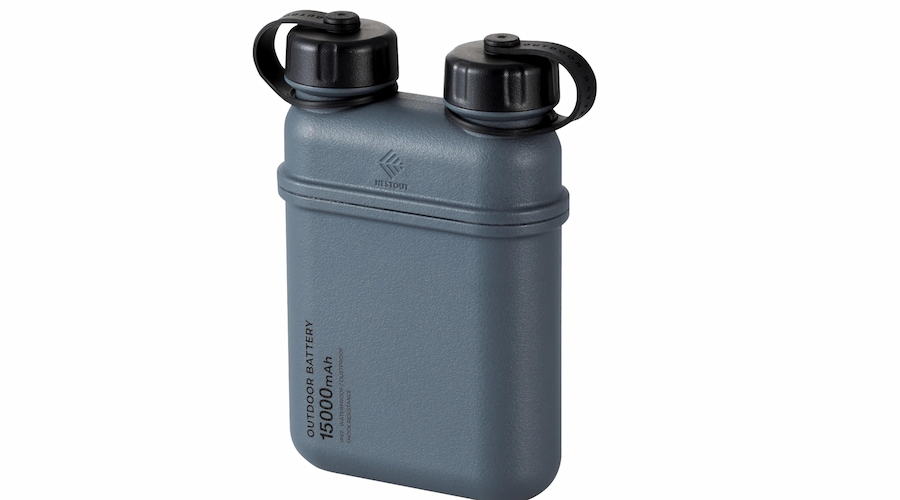

Key features
15,000 mAh rugged cell – balanced size-to-capacity for weekend treks
IP67 waterproof & dustproof – survives 1 m submersion for 30 min
MIL-STD 810G shock resistance – silicone cushioning absorbs drops and vibes
¼-20 ” tripod mount – powers lights or cameras directly on a stand
5. BLAVOR Solar Power Bank 10,000 mAh
If you spend layover hours lounging on warm granite slabs, why not let the sun top up your gadgets too? BLAVOR’s palm-sized solar power bank for camping pairs a 10,000 mAh lithium-cobalt cell—rated for extra charge cycles—with a compact panel that trickle-feeds when strapped to your pack.
For day-to-day use, a 20 W USB-C port and 10 W Qi pad cover wired and wireless devices side by side, so you can juice a phone while your earbuds nap on top. The ABS + PC shell wears a grippy rubberised coating, IPX5 gaskets shrug off splashes, and dual LED torches light the way when campsite stakes vanish after dark.
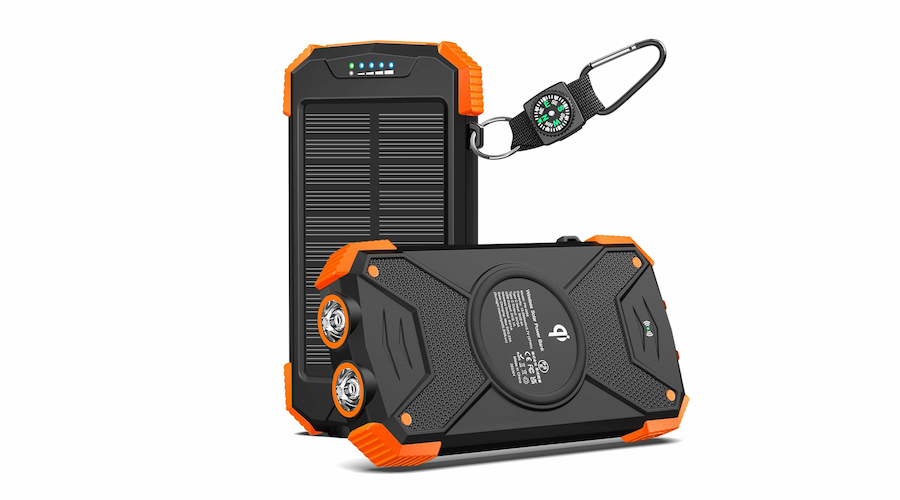

Key features
20 W USB-C + 10 W Qi wireless – charge three devices simultaneously
Integrated solar panel – trickle-charges the bank in direct sunlight for backup resilience
10,000 mAh – iPhone 14 Pro ≈ 2.2 charges; iPad Air ≈ 1 charge
IPX5 water & shock protection – rubber skin-feel coating adds grip and durability
Twin LED flashlights + compass carabiner – built-in safety and navigation aids for trail use
What to Look for Before Buying a Camping Power Bank
To help you find the perfect portable power bank for camping, here’s a run‑through of the specs you’ll need to check and balance:
Capacity vs. Weight
First, think about the trade‑off between capacity and weight. mAh (or Wh) rating tells you how much energy is on tap. A 10,000 mAh bank generally fills a modern phone ~2 times and slips unnoticed into a jacket pocket.
20,000 to 27,000 mAh (100Wh) is a safer bet for a weekend with a tablet, camera, or even a USB‑C laptop. Just keep in mind—bigger batteries mean more weight. If you’re hiking all day, anything over 500 g can start to feel like a brick by the time you hit kilometre 12.
However, if you’re planning a longer off-grid stay and need to run things like a mini fridge, fan, or a kettle at an unpowered campsite, you’ll want to start looking at portable power stations, which typically start at around 200 Wh and are built for heavier-duty use.
Output Power & Charging Protocols
Next, match the power bank’s output to the hungriest device you carry. Modern laptops and larger tablets need 60–100 W delivered over USB‑C Power Delivery while phones and earbuds can make do with 20 W. The safest bet is a bank that supports both PD 3.0 or 3.1 and the older Qualcomm Quick Charge standard, so everything in your kit charges at its top speed.
Number and Type of Ports
Think about how many devices you’ll be charging, and what kind of cables they use. Two USB‑C ports let you charge the laptop and phone simultaneously while legacy USB‑A ports keep older head‑torches or GPS units alive.
If you’re using a MagSafe-enabled iPhone, a Qi2-certified wireless power bank can be super convenient, allowing you to snap on the battery packwith a click and charge at 15 W speed. Plus, many models offer built-in cables, which is a nice bonus if you’re tired of dealing with messy cords.
Re-charging the Bank Itself
How quickly the bank recharges itself matters just as much. Look for an input rating of 60 W or higher, then a full refill takes about the same time as a long coffee stop rather than an entire afternoon. Two‑way or “pass‑through” charging is a bonus in hostel dorms or crowded huts, letting one wall socket feed both the power bank and a device at once.
Build & Weatherproofing
For rugged trips, pay attention to the shell and seals. An IP67‑rated case can survive rain, dust and the occasional dunking, while silicone or rubber bumpers absorb knocks when the bank tumbles out of an overloaded top pocket. If you camp in alpine cold or outback heat, choose a model with active temperature monitoring so lithium cells don’t sag—or swell—at the extremes.
Extras You’ll Actually Use
Clear digital display: Exact % and time‑to‑full beats five vaguely blinking LED dots.
Solar panel: Slow but free trickle charge on long, sunny layovers.
Kickstand or tripod mount: Doubles as a phone stand or lantern power base.
LED flashlight or SOS mode: Not a head‑torch replacement, but handy when the Zippo runs dry.
App control or location buzzer: Lets you track charge data or ping your power bank if it gets buried in your gear pile.
Safety & Cell Quality
Finally, check the small print:
Certification labels (CE, RCM, UL) indicate the bank has passed basic electrical-safety tests.
Battery chemistry: High-quality lithium-cobalt or LiFePO₄ cells endure more cycles before noticeable capacity drop.
Protection circuitry: Over-temp, over-current and short-circuit guards are non-negotiable when you’re charging gear inside a nylon tent.
Conclusion
A good camping power bank should slip into your side pocket or bag, shrug off dust and drizzle, and recharge your phone long after the campfire’s burned down. Whether you hike ultralight and only need a quick phone top‑up, or you carry a tablet and USB‑C laptop for mapping and photo edits, the models we’ve highlighted have you covered. Use the buying tips above—balance mAh and weight, verify fast‑charge protocols, and pick something rugged and weatherproof—to match a power bank the way you camp!
FAQs
What is a good size power bank for camping?
For a short overnight trip, a 10,000 mAh power bank hits the sweet spot—you’ll squeeze in two to three full phone charges without adding much weight to your pack. If you also carry a tablet, camera or USB‑C laptop to spend the weekend, bump up to at least 20,000 mAh, so you’re not rationing power once you’re off the grid.
How big of a battery bank do I need for camping?
For basic needs like charging a phone and headlamp over a weekend, a 10,000 mAh power bank is usually sufficient. If you’re also charging a tablet, camera, or even a laptop, or going on longer trips, a 20,000-25,000 mAh battery bank is more appropriate.
How many days can a 20,000mAh power bank last?
Used only for a smartphone, a 20,000 mAh bank usually delivers four to five full charges, translating to three or four days of typical camping use. Add a tablet or share power with a mate and that window shrinks. Heavy GPS logging, video shooting or cold weather can also drain the bank faster, so plan for about 60–70 % of the headline capacity in real‑world conditions.